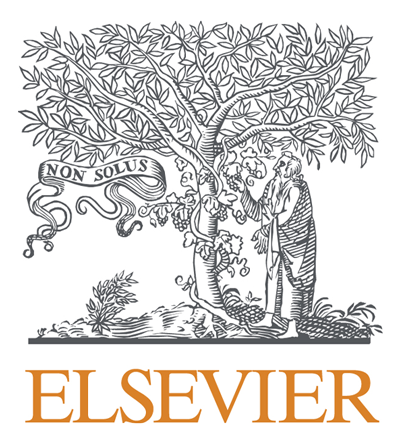Will we know them by their works? Critically assessing high-resolution characterization of (sub)populations derived from the distant measurement of their built environments
The session recording will be archived on the site until June 25th, 2023
This session was streamed but not recorded
Date: 3/25/2023
Time: 8:30 AM - 9:50 AM
Room: Mineral Hall G, Hyatt Regency, Third Floor
Type: Paper,
Theme: Toward More Just Geographies
Curated Track: AAG's GeoEthics Initiative and Related Effort
Sponsor Group(s):
Population Specialty Group
Organizer(s):
Angela Cunningham Oak Ridge National Laboratory
Chair(s):
Angela Cunningham Oak Ridge National Laboratory
Description:
High-resolution knowledge of population distributions and characteristics is vitally important for many applications: effectively deploying disaster response, efficiently distributing vaccines, establishing development metrics, and equitably allocating political power and resources. Where direct data about populations are not readily available, population modelers have often turned to ancillary data about patterns in the built environment that can be read at a distance, based on the assumption that the visible traces people leave on the surface of the earth – cultivated and impermeable landcover, roads and other infrastructure, nighttime lights – accurately reflect the people themselves (Leyk et al., 2019). Different types of people build and inhabit landscapes differently, the various quotidian rhythms of their lives shaping and reshaping the spaces they produce (Buzar et al., 2005; Lefebvre, 2004; Wardrop et al., 2018). We know empirically that accounting for such localized spatial heterogeneities in land use and neighborhood morphology, for age and gender distinctions, and for statistically measurable relationships between building characteristics and demographic markers produce more accurate and actionable data products at the scale of policy (Alegana et al., 2015; Gething et al., 2015; Szarka & Biljecki, 2022). As remotely sensed data have become more precise, as new socially sensed data have become available, as more efficient algorithms have been developed, and as computing power has increased, we have been able to strive towards the spatial, temporal and demographic scale of everyday life (Moehl et al., 2021; Woods et al., 2022; Yang et al., 2018).
However, while our ability to assess human-environment interactions has evolved, our methodologies for identifying, categorizing, and quantifying subpopulations from their built environments remain susceptible to ontological, epistemological, and ethical concerns. Ever more precise data may introduce noise, hinder our ability to distinguish real change from data artefacts, and lull us into the belief that in being able to draw more detailed patterns we must necessarily improve our understanding of the processes behind them (Bennett et al., 2022; Comber & Wulder, 2019; Rose & Bright, 2014). The need to mind the duplicitous gap between our view across remotely-sensed, algorithmically-modeled distance and contingent, dynamic, contested life on the ground persists (Bennett et al., 2022; Daniels, 1989; Mitchell, 2002). What of the migrants in motion, the homeless sleeping in doorways, the categories of lived experience that we have failed to qualify or quantify, invisible because we have not learned to see their material traces? What can we really know about people by observing the places they build, through satellite imagery, social media, or census tabulations? Our successes in population modeling show that knowledge is indeed power: knowing where to send vaccines or build schools has real impacts on people’s lives. It is imperative to critically assess our methodologies of knowledge production to be able to mobilize this power appropriately and to best effect.
Works Cited:
Alegana, V. A., Atkinson, P. M., Pezzulo, C., Sorichetta, A., Weiss, D., Bird, T., Erbach-Schoenberg, E., & Tatem, A. J. (2015). Fine resolution mapping of population age-structures for health and development applications. Journal of The Royal Society Interface, 12(105), 20150073. https://doi.org/10.1098/rsif.2015.0073
Anderson, C. (2008, June 23). The end of theory: The data deluge makes the scientific method obsolete. Wired. https://www.wired.com/2008/06/pb-theory/
Bennett, M. M., Chen, J. K., Alvarez León, L. F., & Gleason, C. J. (2022). The politics of pixels: A review and agenda for critical remote sensing. Progress in Human Geography, 46(3), 729–752. https://doi.org/10.1177/03091325221074691
Bohon, S. A. (2018). Demography in the big data revolution: Changing the culture to forge new frontiers. Population Research and Policy Review, 37(3), 323–341. https://doi.org/10.1007/s11113-018-9464-6
Buzar, S., Ogden, P. E., & Hall, R. (2005). Households matter: The quiet demography of urban transformation. Progress in Human Geography, 29(4), 413–436. https://doi.org/10.1191/0309132505ph558oa
Comber, A., & Wulder, M. (2019). Considering spatiotemporal processes in big data analysis: Insights from remote sensing of land cover and land use. Transactions in GIS, 23(5), 879–891. https://doi.org/10.1111/tgis.12559
Dahmm, H., Rabiee, M., Espey, J., Adamo, S., de Sherbinin, A., & Chen, R. (2020). Leaving no one off the map: A guide for gridded population data for sustainable development. POPGRID Data Collaborative, Thematic Research Network on Data and Statistics, Sustainable Development Solutions Network.
Daniels, S. (1989). Marxism, culture, and the duplicity of landscape. In R. Peet & N. Thrift (Eds.), New models in geography (Vol. 2, pp. 196–220). Unwin Hyman.
Davis, D. S., Buffa, D., Rasolondrainy, T., Creswell, E., Anyanwu, C., Ibirogba, A., Randolph, C., Ouarghidi, A., Phelps, L. N., Lahiniriko, F., Chrisostome, Z. M., Manahira, G., & Douglass, K. (2021). The aerial panopticon and the ethics of archaeological remote sensing in sacred cultural spaces. Archaeological Prospection, 28(3), 305–320. https://doi.org/10.1002/arp.1819
Gething, P., Tatem, A., Bird, T., & Burgert-Brucker, C. R. (2015). Creating spatial interpolation surfaces with DHS data (DHS Spatial Analysis Reports No. 11). ICF International. https://dhsprogram.com/pubs/pdf/SAR11/SAR11.pdf
Lefebvre, H. (2004). Rhythmanalysis: Space, time and everyday life (S. Elden & G. Moore, Trans.). Continuum.
Leyk, S., Gaughan, A. E., Adamo, S. B., de Sherbinin, A., Balk, D., Freire, S., Rose, A., Stevens, F. R., Blankespoor, B., Frye, C., Comenetz, J., Sorichetta, A., MacManus, K., Pistolesi, L., Levy, M., Tatem, A. J., & Pesaresi, M. (2019). The spatial allocation of population: A review of large-scale gridded population data products and their fitness for use. Earth System Science Data, 11(3), 1385–1409. https://doi.org/10.5194/essd-11-1385-2019
Mitchell, D. (2002). Cultural landscapes: The dialectical landscape – recent landscape research in human geography. Progress in Human Geography, 26(3), 381–389. https://doi.org/10.1191/0309132502ph376pr
Moehl, J. J., Weber, E. M., & McKee, J. J. (2021). A vector analytical framework for population modeling. The International Archives of the Photogrammetry, Remote Sensing and Spatial Information Sciences, XLVI-4/W2-2021, 103–108. https://doi.org/10.5194/isprs-archives-XLVI-4-W2-2021-103-2021
Rose, A. N., & Bright, E. (2014). The LandScan Global Population Distribution Project: Current state of the art and prospective innovation. [Conference presentation] APA 2014, Boston, United States. https://www.ornl.gov/publication/landscan-global-population-distribution-project-current-state-art-and-prospective
Szarka, N., & Biljecki, F. (2022). Population estimation beyond counts—Inferring demographic characteristics. PLOS One, 17 (4): e0266484. https://ual.sg/publication/2022-plos-population-estimation/
Wardrop, N. A., Jochem, W. C., Bird, T. J., Chamberlain, H. R., Clarke, D., Kerr, D., Bengtsson, L., Juran, S., Seaman, V., & Tatem, A. J. (2018). Spatially disaggregated population estimates in the absence of national population and housing census data. Proceedings of the National Academy of Sciences, 115(14), 3529–3537. https://doi.org/10.1073/pnas.1715305115
Woods, D., Cunningham, A., Utazi, C. E., Bondarenko, M., Shengjie, L., Rogers, G. E., Koper, P., Ruktanonchai, C. W., zu Erbach-Schoenberg, E., Tatem, A. J., Steele, J., & Sorichetta, A. (2022). Exploring methods for mapping seasonal population changes using mobile phone data. Humanities and Social Sciences Communications, 9(1), Article 1. https://doi.org/10.1057/s41599-022-01256-8
Yang, H. L., Yuan, J., Lunga, D., Laverdiere, M., Rose, A., & Bhaduri, B. (2018). Building extraction at scale using convolutional neural network: Mapping of the United States. IEEE Journal of Selected Topics in Applied Earth Observations and Remote Sensing, 11(8), 2600–2614. https://doi.org/10.1109/JSTARS.2018.2835377
Copyright: This manuscript has been authored by UT-Battelle, LLC under Contract No. DE-AC05-00OR22725 with the U.S. Department of Energy. The United States Government retains and the publisher, by accepting the article for publication, acknowledges that the United States Government retains a non-exclusive, paid-up, irrevocable, world-wide license to publish or reproduce the published form of this manuscript, or allow others to do so, for United States Government purposes. The Department of Energy will provide public access to these results of federally sponsored research in accordance with the DOE Public Access Plan (http://energy.gov/downloads/doe-public-access-plan).
Acknowledgement: This material is based upon the work supported by the U.S. Department of Energy under contract no. DE-AC05-00OR22725.
Presentations (if applicable) and Session Agenda:
Angela Cunningham, Oak Ridge National Laboratory |
Identifying socioeconomic distinctions in the built environment: a case study using dwelling and occupant characteristics recorded in Ghana’s Demographic and Health Survey of 2014 |
Clinton Stipek |
Leveraging Random Forest on Open-Source, Big Data to Calculate Number of Building Floors |
Lukas von Tobel |
Development of a Rapid Population Estimate (RPE) based on Building Footprints, Neighborhood Type and Georeferenced Input Data |
Fennis Reed, CA Demographic Research Unit - Sacramento, CA |
Dynamic Estimates of Population via the Cadastral Expert Dasymetric System |
Non-Presenting Participants
| Role | Participant |
|
| |
| |
| |
| |
| |
| |
| |
| |
| |
Will we know them by their works? Critically assessing high-resolution characterization of (sub)populations derived from the distant measurement of their built environments
Description
Type: Paper,
Date: 3/25/2023
Time: 8:30 AM - 9:50 AM
Room: Mineral Hall G, Hyatt Regency, Third Floor
Contact the Primary Organizer
Angela Cunningham Oak Ridge National Laboratory
cunninghamar@ornl.gov








